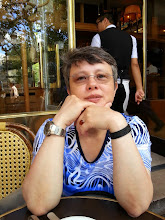"Dreams", 1990, by Akira Kurosawa, Warner Home Video DVD, 2003
"Dreams", by Akira Kurosawa, is a movie about eight dreams made by Kurosawa throughout his life. It was written by the master himself, and shot entirely in Japan in Gotemba Shizuoka and in Tokyo. The movie is a slow-paced and hypnotic-like journey into Kurosawa's dreams, and deals with universal feelings, ideas or important issues, such as beauty, respect for nature, war, mental illness, death, human failures and our ability to connect with the living in a more general sense. Although the eight dreams - but are they really? - pertain to very different areas of human life, they contain some overlapping themes, which make the movie easier to watch, but to my eyes this is detrimental to its credibility. The eight dreams: Sunshine Through The Rain, The Peach Orchard, The Blizzard, The Tunnel, Crows, Mount Fuji in Red, The Weeping Demon and Village of the Watermills, are treated as parables of stunning beauty and allow the viewer to reflect on their richness, either by thinking or by own reverie. As a unifying thread, we follow a wandering ego throughout the eight dreams, whose role seem to be that of a witness to the director's astonishing cinematographic mastery. At that point, dare I say that this mastery is more likely what makes "Dreams" more an exercise in cinematographic virtuosity than the spontaneous tale of a man's dreamlike world. Let us take two examples.
In "The Tunnel", Kurosawa shows us a Japanese captain who has recently being demobilized. As he approaches a dark tunnel, he suddenly finds himself face to face with a menacing anti-tank dog, strapped with explosives. Soon after, he hears the footsteps of a man approaching. The man, one of his soldiers, has been killed during a bloody battle. His soldier is lost between our world and the afterlife, not knowing what to do next, not even realising his life is over. The two men try to communicate with one another, but there is a sense of dead end in the dialogue. Next, the entire company of the captain emerges from the tunnel, faces painted in pale blue and white, they too bewildered and anxiety-laden. As the captain tries to express his sorrow to all his dead men, they look at him silently, as if his words - the absurdity of war, the inhumanity of military life, his own lack of courage during battle - were useless, unable to either alleviate their torments or make sense of their sad fate. Perhaps, it's just me, but I found this one dream terribly preachy. Was it really a dream? Or more like a charge Kurosawa made towards the army, wars fought here and there for whatever purpose or cause, always ending with the same pain and bitterness?
There is no doubt than the eight dreams are the product of an accomplished visual artist (Kurosawa was a trained painter, storyboarding his films as full-scale paintings), but they don't really feel like they are dreams. Another example of my discomfort, in the ' Village of the Watermills', Kurosawa journeys through the almost-to-good-to-be-true natural beauty of a picturesque landscape. There, he meets an old man who is fixing a watermill wheel. The two engage in a profound reflection about the meaning of human life, the values we should embrace and the illusions we should rid ourselves from. All very interesting and all that, but somehow out of place in what is after all, supposed to be a dream. But, the scenery is astonishingly beautiful, the atmosphere charming, almost to the point of reminding me of another great visual (Hollywood) dream, that of the "Wizard of Oz". Too sacrilege? Debatable, I know. But for all my admiration for Kurosawa's work, I find myself unable to embark on this dreamlike masterpiece. Simply too sophisticated to its own good. What dreams may become, we never really know. But from where they come from, they seldom come as perfect as that. Or, do they?













No comments:
Post a Comment